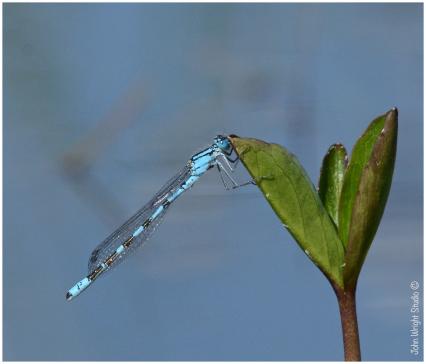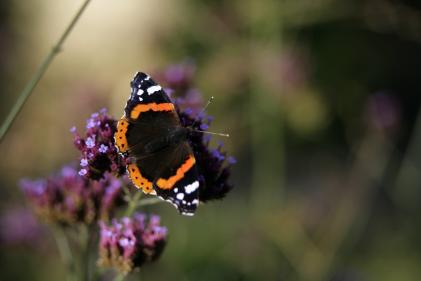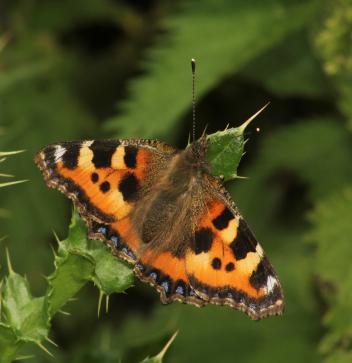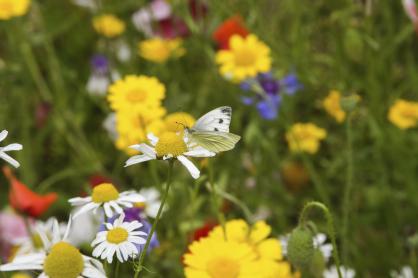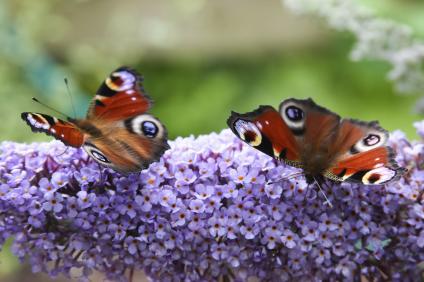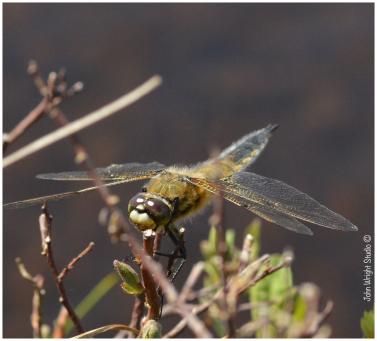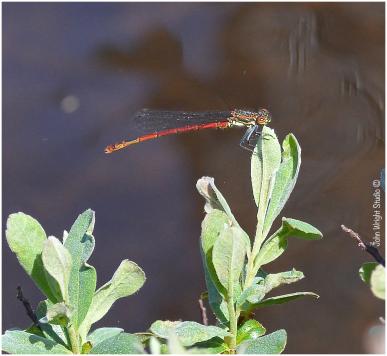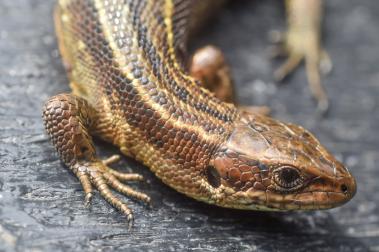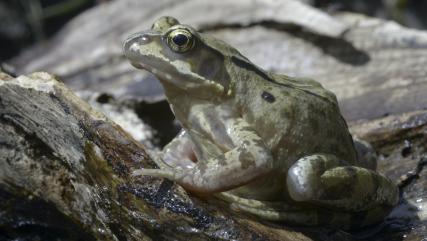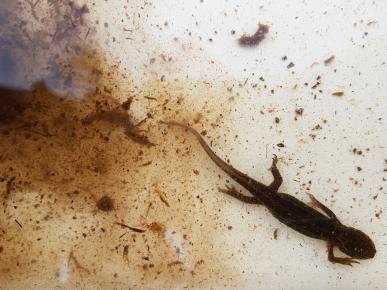Common blue damselfly (Enallagma cyathigerum)
Photo credit: John Wright |
Most likely to see: April - September Habitat: near water areas and lochs More information: https://british-dragonflies.org.uk/species/common-blue-damselfly/ https://www.wildlifetrusts.org/wildlife-explorer/invertebrates/damselflies/common-blue-damselfly |
|
Most likely to see: Summer Habitat: Most areas, from shorelines to mountainous regions More information: https://butterfly-conservation.org/butterflies/red-admiral https://www.ukbutterflies.co.uk/species.php?species=atalanta
|
Red admiral butterfly (Vanessa atalanta)
Photo credit: Andy Hay |
Small tortoiseshell (Aglais urticae)
Photo credit: Grahame Madge |
Most likely to see: Summer Habitat: Mostly seen in field margins but present on every habitat type More information: https://butterfly-conservation.org/butterflies/small-tortoiseshell |
|
Most likely to see: Summer Habitat: moorland, woodland edges, river banks and lochs More information: https://butterfly-conservation.org/butterflies/green-veined-white |
Green-veined white butterfly (Pieris napi)
Photo credit: Jenny Tweedie |
Peacock butterfly (Aglais io)
Photo credit: Jenny Tweedie |
Most likely to see: Summer Habitat: prefers woodland clearings, rides and edges More information: https://butterfly-conservation.org/butterflies/peacock https://www.rspb.org.uk/birds-and-wildlife/wildlife-guides/other-garden-wildlife/insects-and-other-invertebrates/butterflies/peacock-butterfly/ |
|
Most likely to see: on sunny summer days Habitat: grasslands, heathland and moorland, wetlands and fresh water More information: https://british-dragonflies.org.uk/species/four-spotted-chaser/ https://www.wildlifetrusts.org/wildlife-explorer/invertebrates/dragonflies/four-spotted-chaser |
Four-spotted chaser dragonfly (Libellula quadrimaculata)
Photo credit: John Wright |
Large red damselfly (Pyrrhosoma nymphula)Photo credit: John Wright |
Most likely to see: April - August Habitat: freshwater areas, woodland and wetlands More information: https://british-dragonflies.org.uk/species/large-red-damselfly/ https://www.wildlifetrusts.org/wildlife-explorer/invertebrates/damselflies/large-red-damselfly |
|
Most likely to see: June - October Habitat: moorland, heathland, freshwater and wetland areas More information: https://www.wildlifetrusts.org/wildlife-explorer/invertebrates/dragonflies/common-hawker |
Common hawker dragonfly (Aeshna juncea)Photo credit: Clara Risi
|
Common lizard (Zootoca vivipara)
Photo credit: Sam Udale-Smith |
Most likely to see: March - October Habitat: grassland, healthland and moorland Conservation status: listed as a priority species under the UK Post-2010 biodiversity framework More information: https://www.wildlifetrusts.org/wildlife-explorer/reptiles/common-lizard https://www.froglife.org/info-advice/amphibians-and-reptiles/common-lizard/ |
|
Most likely to see: Year-round but commonly seen March - October Habitat: ponds or loch areas More information: https://www.froglife.org/info-advice/amphibians-and-reptiles/common-frog-2/ |
Common frog (Rana temporaria)
Photo credit: RSPB-images.com |
Common Toad (Bufo bufo)Photo credit: Sam Udale-Smith |
Most likely to see: March – October (at night or after rain) Habitat: ponds and lochs More information: https://www.froglife.org/info-advice/amphibians-and-reptiles/common-toad-2/ |
|
Most likely to see: March - October Habitat: heathland, moorland and bog. Preferring shallow ponds and acid-rich soils. More information: https://www.arc-trust.org/palmate-newt https://www.wildlifetrusts.org/wildlife-explorer/amphibians/palmate-newt https://www.froglife.org/info-advice/amphibians-and-reptiles/palmate-newt/ |
Palmate newts (Lissotriton helveticus)Photo credit: unknown |
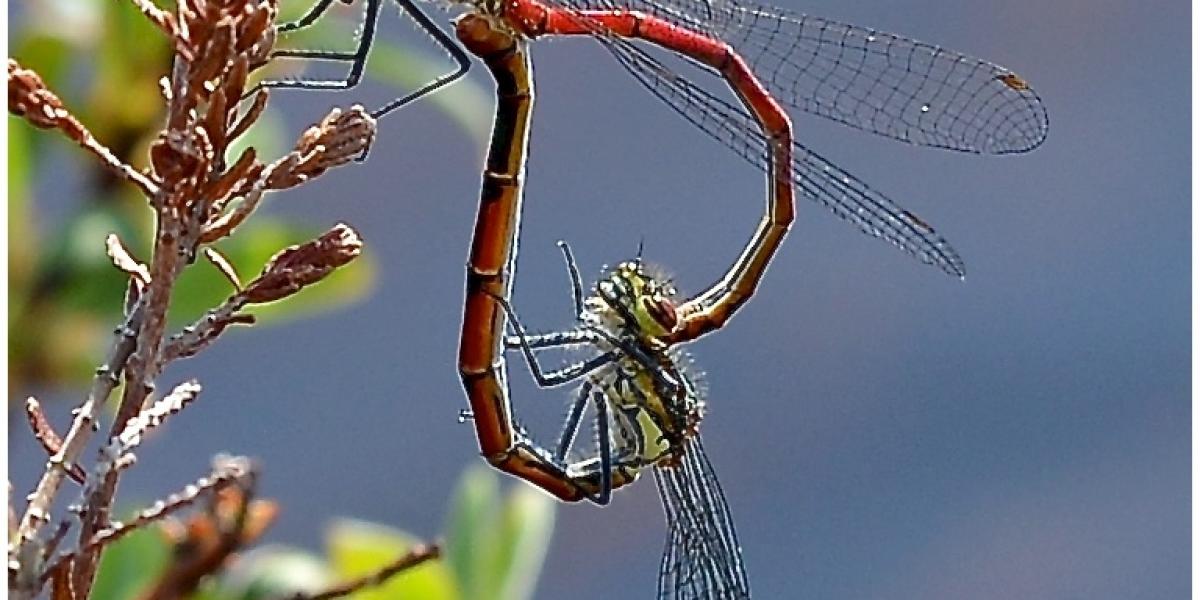
Insects & Herptiles


